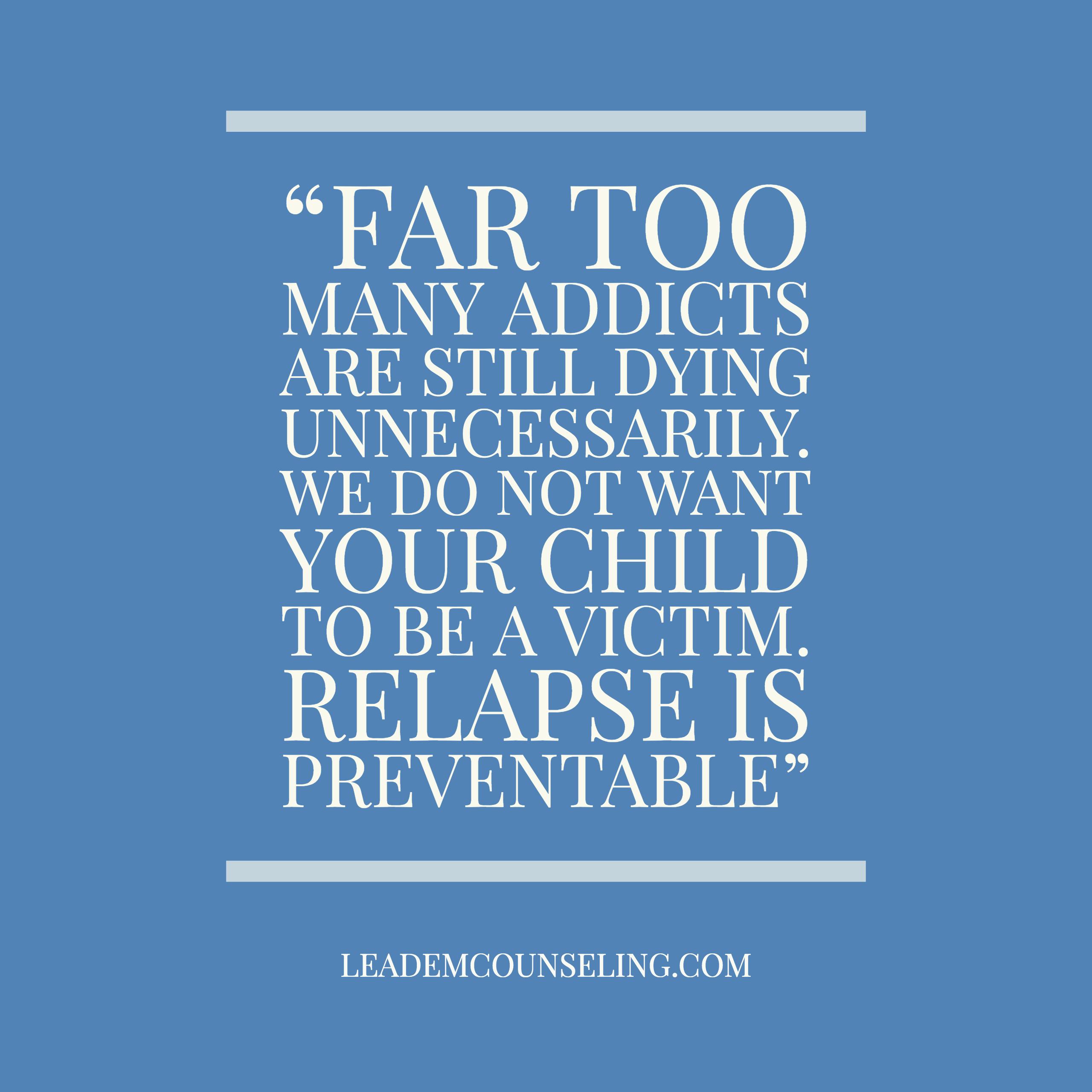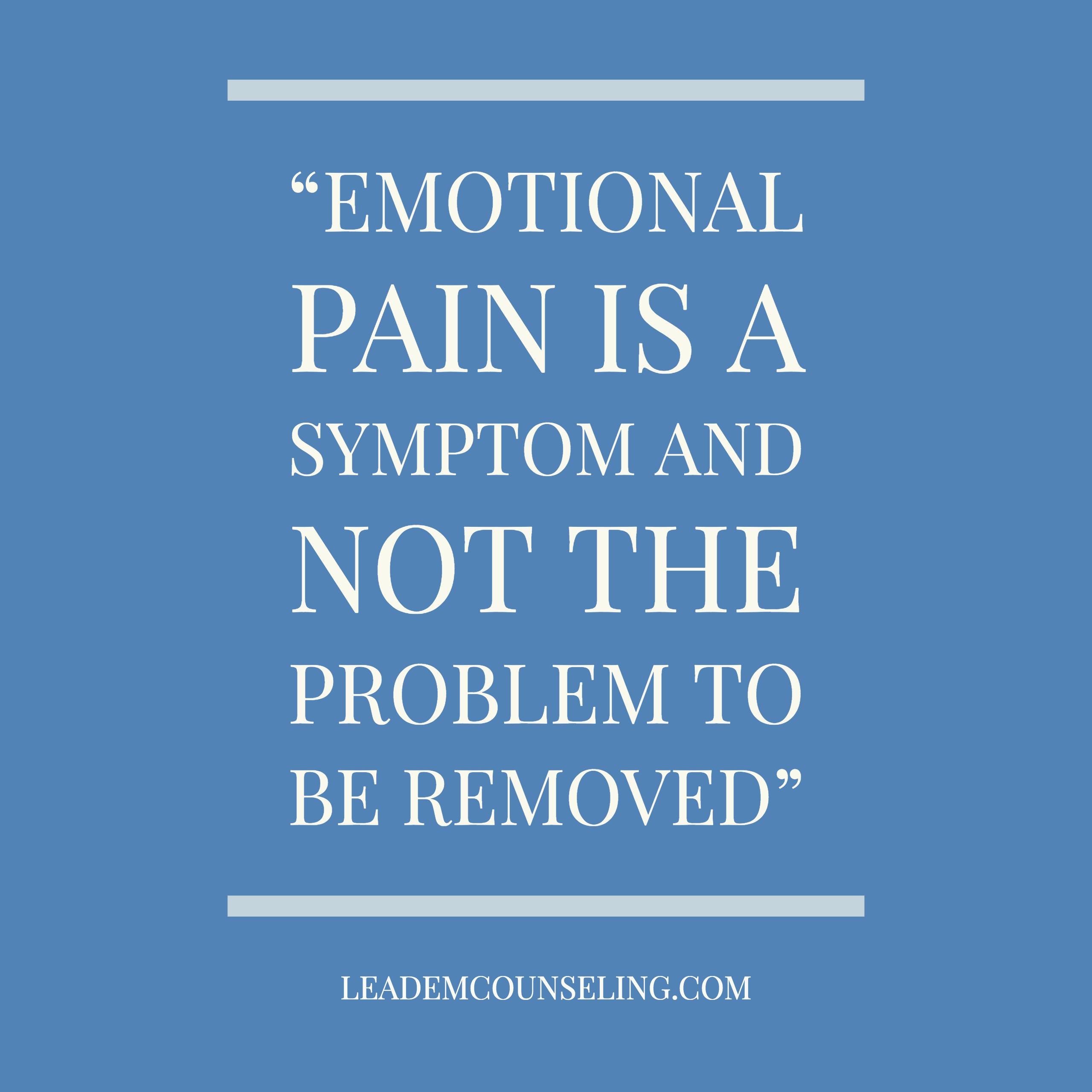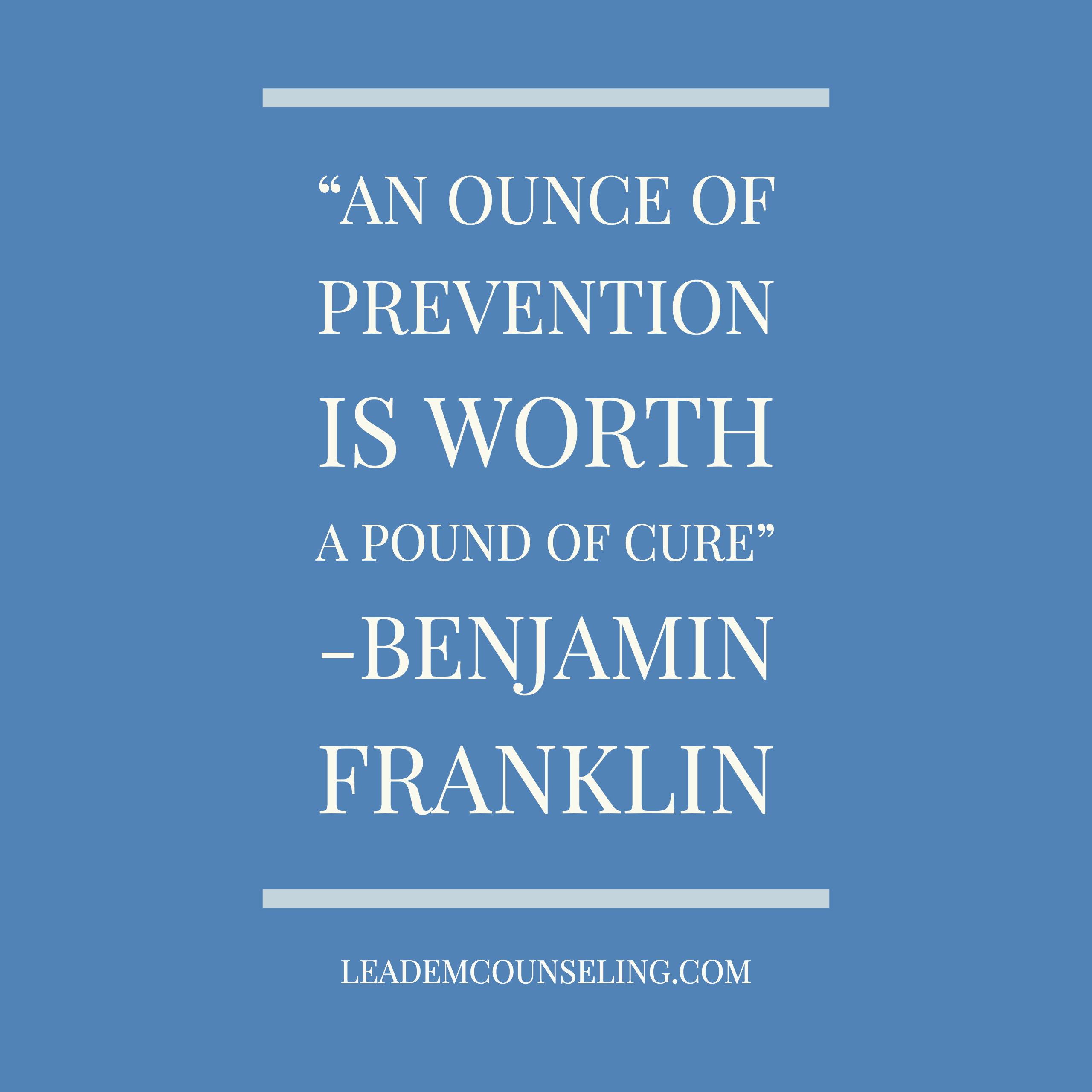What is Relapse?
If you have accepted the notion that relapse is a typical and understandable process from an addiction, then you have been cheated
 The National Institute on Drug Abuse (NIDA) defines relapse as “… a return to drug use … [by a person] … who’s trying to stop using drugs… [but who] … can make mistakes, feel bad, and start using again”. The article, What Is Relapse [1], unfortunately likens the challenges of people with addictions to those who are “… trying to diet and lose weight” and who find it hard to do things differently, “… like eat less, exercise more and avoid some favorite foods.” It continues this hazardous logic by proposing that relapse is a “… normal part of recovery”, almost as if it is to be expected.
The National Institute on Drug Abuse (NIDA) defines relapse as “… a return to drug use … [by a person] … who’s trying to stop using drugs… [but who] … can make mistakes, feel bad, and start using again”. The article, What Is Relapse [1], unfortunately likens the challenges of people with addictions to those who are “… trying to diet and lose weight” and who find it hard to do things differently, “… like eat less, exercise more and avoid some favorite foods.” It continues this hazardous logic by proposing that relapse is a “… normal part of recovery”, almost as if it is to be expected.
We believe this message to be one that promotes hopelessness because with every relapse the prospect of sustained abstinence will become more elusive. We prefer the position adopted by the American Society of Addiction Medicine (ASAM) [2]: Relapse is “ … not willful misconduct but a recognized part of addictive illness warranting further intervention; additional treatment; and/or enhanced monitoring.” We cannot imagine how anyone can equate an extra helping of dessert or a failed New Year’s resolution to exercise every day to the horrors that addicts and their families have come to associate with relapse.
A child cries to be held in the arms of a parent whose affection is lost to addiction.
A child does not cry because their mom missed a day on the treadmill or gained back the water weight she lost last week.
We agree that chronic illnesses like addiction can have relapse as a hallmark diagnostic feature but it is not required, should not be viewed as common and should not be dismissed as if a return to heroin was like indulging in a forbidden bag of chips. Super-sizing your fast food order can leave one feeling shame and a sense of loss but is it really like getting drunk and embarrassing your daughter at her wedding after you have been dry for three months? Certainly, we can feel like a failure when we have abandoned a workout routine before being able to fit into the new wardrobe we imagined rewarding ourself with in the Spring. But, should we liken it to the addict’s loss of child-visitation rights or the pain of being the child whose parent seems to love drugs more than a tea party? This child knows the pain of loss but that is only the tip of the iceberg.
Addiction Hurts
 If you have experienced any of the consequences of an addictive illness then you have known pain. Addiction hurts whether you are the addict who is trapped on the merry-go-round, a barroom widow or one of the other victims of the behaviors associated with any addictive disorder. It does not matter whether you are a child growing up in addiction, an employer trying to figure out how to manage an employee troubled by addiction or the members in a church community who has resigned itself to having lost one of its sheep to the jaws of addiction — it hurts to care for an addict. Every sphere of impact; from our society as a whole to the addict who is at the epicenter of the disaster feels the cost of untreated addiction or relapse. You could fill a library with the works published that address the cost of addiction. A great deal of emotional and financial resources are invested every year to interrupt the addictive process and introduce those affected to therapeutic resources needed to stop the destructive cycle. Every major newspaper warns of the heroin epidemic that is sweeping the country. So why are we still calling an addict’s return to his or her drug of choice a mistake in judgement. It is really not that simple.
If you have experienced any of the consequences of an addictive illness then you have known pain. Addiction hurts whether you are the addict who is trapped on the merry-go-round, a barroom widow or one of the other victims of the behaviors associated with any addictive disorder. It does not matter whether you are a child growing up in addiction, an employer trying to figure out how to manage an employee troubled by addiction or the members in a church community who has resigned itself to having lost one of its sheep to the jaws of addiction — it hurts to care for an addict. Every sphere of impact; from our society as a whole to the addict who is at the epicenter of the disaster feels the cost of untreated addiction or relapse. You could fill a library with the works published that address the cost of addiction. A great deal of emotional and financial resources are invested every year to interrupt the addictive process and introduce those affected to therapeutic resources needed to stop the destructive cycle. Every major newspaper warns of the heroin epidemic that is sweeping the country. So why are we still calling an addict’s return to his or her drug of choice a mistake in judgement. It is really not that simple.
A relapse into active addiction is a preventable syndrome and not a predictable aspect of recovery. Proponents of the position that relapse is a common phenomenon in the recovery process from addiction would have you believe that relapses are expected and that most people recovering from an addictive illness will “fall short” of “perfection” from time to time. If we are going to do something about stemming the tide that is flooding our communities we will need to do more than respond to threats of addiction as if it were merely a “bad habit” — no pun intended. If it is your loved one who is addicted, it is not comforting to be told that relapse is commonplace and eventually your son or daughter may see the truth and make the changes that are required to secure long-termed sobriety. We are sure you caught the key phrase in the previous sentence — may see the truth.
Far too many addicts are still dying unnecessarily. We do not want your child to be a victim. Relapse is preventable.
What is Relapse Prevention?
 Relapse is a preventable syndrome and not an inevitable aspect of recovery! An addict relapses, in whatever form it takes, in order to change the way he or she feels and for no other reason! Addicts do not drink again or overeat or gamble away the mortgage payment because they are rejected or hurt. Those realities can be hurtful, that is true, but every addict secretly knows that there is no challenge in life that a “drug” will make better if he or she returns to source of the problem. Addicts return to our drug of choice because they have chosen to not address those and other uncomfortable emotions in healthy ways.
Relapse is a preventable syndrome and not an inevitable aspect of recovery! An addict relapses, in whatever form it takes, in order to change the way he or she feels and for no other reason! Addicts do not drink again or overeat or gamble away the mortgage payment because they are rejected or hurt. Those realities can be hurtful, that is true, but every addict secretly knows that there is no challenge in life that a “drug” will make better if he or she returns to source of the problem. Addicts return to our drug of choice because they have chosen to not address those and other uncomfortable emotions in healthy ways.
When we stuff our feelings, they do not seem to stay put and that is particularly problematic if you suffer with an addiction that has let you to believe that the source of your problems is the solution to the problems it has created or made worse. Pressure of some type begins to build and the thought that “one small indulgence of (my) drug of choice can’t hurt” seems to make sense. That build up may take minutes, weeks, or years but eventually an addict will seek relief from the pain of living with all those pent-up emotions. It is inevitable that he or she will have an emotional discharge or collapse, which will invariably move them closer to an actual return to active addiction but it is not necessary.
All addictive substances or addictive behaviors have the potential for physical and/or psychological dependency by virtue of the potential impact that the substance or behavior has for altering our mood or feelings. If an addicted person uses a mood-altering substance or engages in an addictive behavior, the choice will be driven by a desire to change the way he or she feels. The addicted person, in the throes of withdrawal, will be driven to the addictive substance or behavior, in varying degrees, by the desire to reduce withdrawal symptoms. One level of withdrawal will generate a mild desire while others will be severe and seemingly impossible to resist. One could argue that the addicted person has no choice in the matter and the disease is making all the decisions, but it is really more complicated than many misguided suffers have attempted to explain. They have offered such arguments such as, “the disease made me do it” or “it was the addict in me” that relapsed. Or our least favorite: “even government health agencies support the idea that relapse is a common part of recovery!”
Human Beings Tend to Worship at the Shrine of the Instant Cure
 Additionally, the negative aspects of withdrawal can generate a strong motivation to continue using the substance or engaging in the addictive behavior, but there is also a drive, powered by one’s defects of character, to change the way they feel when they are uncomfortable, that is contributing to the likelihood that a relapse will occur. We are a species that has learned to worship at the shrine of the instant cure. Discomfort of any kind is to be eliminated. We are told that certain headache remedies are preferred over others because they are formulated to reduce the suffering associated with nighttime headaches versus those intended for the relief of daytime headaches. Is there really a difference between AM and PM headaches? We are bombarded by advertising campaigns that entice us to purchase their products because the product will enhance the quality of our life. Soap commercials are still warning consumers that if they fail to use the right laundry detergent they may suffer the embarrassment of “ring-around-the-collar”. It would seem to us that consumers could avoid the shame of a partner’s dirty shirt collar if old “dirty neck” bathed properly.
Additionally, the negative aspects of withdrawal can generate a strong motivation to continue using the substance or engaging in the addictive behavior, but there is also a drive, powered by one’s defects of character, to change the way they feel when they are uncomfortable, that is contributing to the likelihood that a relapse will occur. We are a species that has learned to worship at the shrine of the instant cure. Discomfort of any kind is to be eliminated. We are told that certain headache remedies are preferred over others because they are formulated to reduce the suffering associated with nighttime headaches versus those intended for the relief of daytime headaches. Is there really a difference between AM and PM headaches? We are bombarded by advertising campaigns that entice us to purchase their products because the product will enhance the quality of our life. Soap commercials are still warning consumers that if they fail to use the right laundry detergent they may suffer the embarrassment of “ring-around-the-collar”. It would seem to us that consumers could avoid the shame of a partner’s dirty shirt collar if old “dirty neck” bathed properly.
All kidding aside, it is important to understand that our obsession with the elimination of discomfort might be generating more discomfort than anyone could adequately medicate. We have learned to go to great lengths to escape from pain. Those who have suffered the pain of addiction have come to understand that many so-called pain relievers only cause more pain. Pain, whether its origin is physical or behavioral, is trying to tell us something. When we tell the doctor that something hurts the symptoms are analyzed as clues to the mystery. The symptoms of physical pain are accepted markers of an underlying problem. Unfortunately, many of us have learned to move quickly away from emotional pain as if it was the problem and an addictive substance or addictive behavior is the solution. Emotional pain is a symptom and not the problem to be removed.
Turn to Others For Help When Developing a Relapse Prevention Plan
Relapse, as a process, will build momentum as it carries physical, emotional and spiritual discomfort from one phase to the next. In time all of your relationships will be negatively impacted by the behaviors associated with the relapse process. Your ability to spot yourself in a particular phase will grow with practice and will be greatly enhanced by engaging others in your Personal Relapse Prevention Plan found in our work: An Ounce of Prevention: A Course in Relapse Prevention, (John Leadem & Shawn Leadem, 2013). If you are not practiced at tracking your mood swings or monitoring your behaviors and the coping strategies that drive them, it might appear that there are no patterns at all. Do not give up. It takes time. You will learn a great deal about what steers the patterns of your life if you continue in the work of self-awareness and building your ability to cope with discomfort.
Interrupting the Relapse Process
While it could be argued that more resources should be invested in intervention strategies designed to stop the progression of an addiction or to make treatment available on demand to all who need it, we believe that far too little is being done to identify and interrupt the relapse process. We have found that far many more addicts are inspired to seek help by the changes they witness in recovering addicts they get to know than they are by attempting to scare them into recovery by focusing on the consequences of not getting help. Therefore, if we put energy and resources into relapse prevention, we can use recovery success to motivate others to seek help. In the same light, we believe that addicts who have an opportunity to identify and intervene on the symptoms of a relapse process are more likely to be motivated to make character changes with the promise of a positive outcome than they are driven to change by the threat of the harm that will come if they don’t. We have chosen to write a course book with immense practical application rather than a critical review of the relapse prevention literature. While there are many fine treatment sources available to those who choose to get sober, there are few resources available for those who want to prevent a relapse. Additionally, it is unfortunate that most treatment programs place very little attention on plans for preventing relapse following discharge.
Our studies have brought us to an understanding that relapse is not an event but a process, that for most, begins long before being introduced to an addictive substance or process. This article and our course has been written because we have learned that relapse is preventable and believe that other addicts and their families deserve to know why and how.
Relapse IS Preventable
 We hope that you are reading this because you have a strong appetite for personal growth and want to learn all you can about the progressive nature of relapse in order to avoid the hardship that a return to active addiction promises. If you have been led here because you are returning from the shadows of a relapse, welcome back. We have hope to share with you and a promise that it never has to happen again. Not ever!
We hope that you are reading this because you have a strong appetite for personal growth and want to learn all you can about the progressive nature of relapse in order to avoid the hardship that a return to active addiction promises. If you have been led here because you are returning from the shadows of a relapse, welcome back. We have hope to share with you and a promise that it never has to happen again. Not ever!
We will be with you in spirit as you move through the process of building a relapse prevention plan because it is a journey that we are very familiar with. We encourage your focus on relapse prevention because it is an insurance policy for your future.
In the words of Benjamin Franklin writing in Poor Richard’s Almanac:
“An ounce of prevention is worth a pound of cure.”
See our book: What is Intervention? Practical Uses for Intervention Strategies
Related Article(s): An Ounce of Prevention: A Course in Relapse Prevention
How to Avoid Relapse and How to Put a Relapse Prevention Technique Into Action
How Can Family Help Intervene in Addiction? The Importance of the Intervention Team?
About the Authors;
About the Authors
 Both John and Shawn Leadem are Licensed Clinical Social Workers in private practice in Toms River, New Jersey.
Both John and Shawn Leadem are Licensed Clinical Social Workers in private practice in Toms River, New Jersey.
John has recently celebrated his 45th year in recovery and believes that “service to others is the cornerstone of spiritual maturity.” His professional service to addicted individuals and their families has included the development and direction of addiction treatment services in a full array of modalities from half-way houses to large residential treatment facilities over the past 44 years.
Shawn’s lifelong exposure to the recovery culture and his personal recovery experience has left him with a deep personal empathy for the social and emotional suffering endured by others and a strong faith in a person’s ability to change. He has received his certification as a Sexual Addiction Therapist and as a Multiple Addictions Therapist by the International Institute for Trauma & Addiction Professionals.
Together, John and Shawn have co-authored and brought their unique treatment model of relapse prevention, An Ounce of Prevention: A Course in Relapse Prevention, to residential treatment centers across the United States, they have trained therapists at numerous national and international conferences, and most recently have trained many EAP programs associated with many State Unions.
© Copyright, John Leadem & Shawn Leadem, 2017
You are free to copy this article for future reference, to post it on other web sites and to share it with family or friends. If you would like to have permission to include it in a publication of your own you can request written permission by contacting the authors at www.leademcounseling.com.
[1] You can find this article at: NIH: Easy-to-Read Drug Facts https://easyread.drugabuse.gov/content/what-relapse
[2] You can find this article at: https://www.asam.org/docs/default-source/public-policy-statements/111pip_relapse_4-11.pdf?sfvrsn=b274212a_0#search=”relapse
[apss-share networks="facebook, twitter, google-plus, pinterest, linkedin" counter="0" total_counter="0" http_count="1"]







No Comments Yet | Post Comment
You can be the first to comment!
Leave a comment